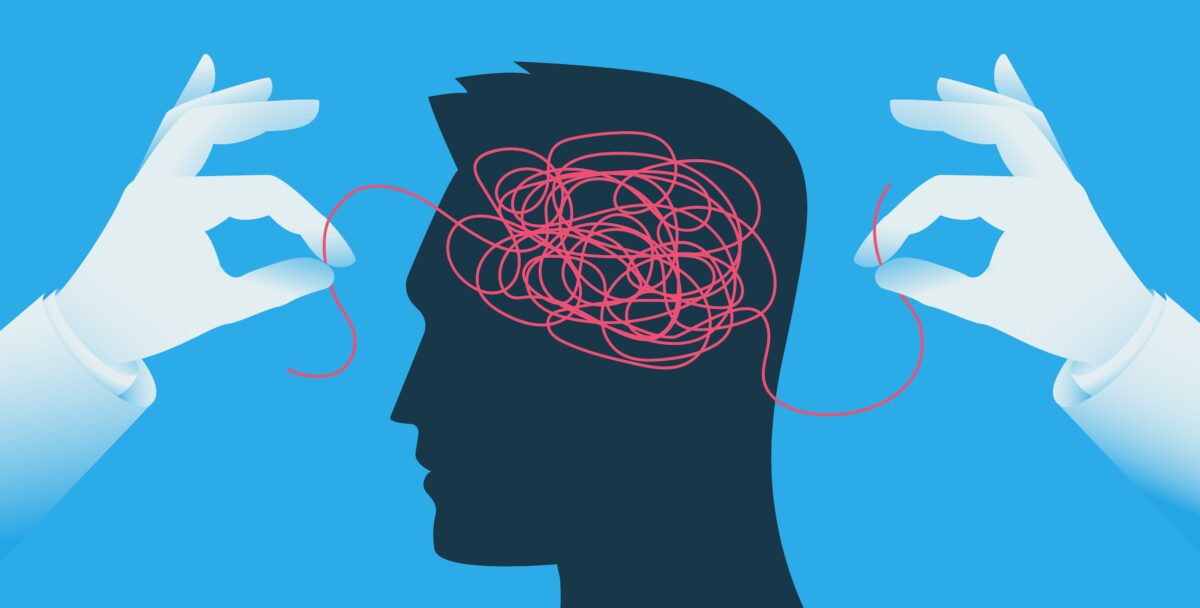Have you ever worried about leaving the iron on or forgetting to lock your car? Or do you worry about not finishing a task on time? Or worry that your job was in jeopardy? Everyone experiences these feelings from time to time.
Worry and anxiety, are a part of the human experience and can be big or small. Everyone experiences this and it’s completely normal.
The good news is there are many tools and resources to help you manage worry and anxiety. The key is to recognize what is going on and use available information to deal with your current circumstances.
What is Worry?

Worrying is feeling uneasy or being overly concerned about a situation or problem. You might worry about things like health, money, or family problems. Worry is…
- Helpful and can improve your functioning, problem-solving, focus, and motivation.
- Very specific
- Stress-related
- Related to a realistic concern
- A piece of anxiety
- Involves your thought
- Something that prompts us to act
What is Anxiety?

Different from worry, anxiety is the reaction to situations perceived as stressful or dangerous. Anxiety can…
- Be hard to manage and often lingers
- Come on quickly
- Interfere with personal and professional functioning (impair activities of daily living)
- Be determined by each person’s perception of their situation
- Trigger a physical response
- Involve a longer duration
- Be a clinical diagnosis with treatment options available
Think about worry and anxiety as the opposite sides of a spectrum. One way to know if your worry has moved into anxiety is your ability to put the brakes on and get it under control. If you can get it under control, it’s more likely to be worry. If getting it under control is harder, this could be a sign that it’s moved into anxiety.
Your Brain and Anxiety

Your brain is hard wired to react to threats in one of three ways:
- Fight (move toward the threat)
- Flight (run away from the threat)
- Freeze (unable to move)
When anxiety hits, you’re likely not aware of how rapidly this all happens. Since your logical mind hasn’t engaged yet, the emotional mind takes over and sends a message to all body systems alerting them to danger – real or imagined. With anxiety, the mind still perceives the
threat even after it’s gone.
What are the Symptoms of Anxiety?

- Agitation or feelings of panic, fear, and doom
- Racing thoughts
- Dizziness
- Dry mouth
- Muscle tension
- Heart palpitations
- Shortness of breath, tightness in the chest
- Numbness and tingling
- Nausea and other stomach symptoms
This can start a cycle of the body tensing and sending a message to the brain that danger is near. The brain fights back and floods the body with more hormones and chemicals, which make the body more charged.
When This Anxiety Cycle Happens, What Can I Do?
Mindfulness experts recommend not fighting it, not judging it, but allowing it to run its course, and work on calming the body and quieting the mind. There are three components to anxiety:
- Emotional (fear, sadness, or irritation)
- Physiological (heart racing, upset stomach)
- Cognitive (I’m a failure, I’ll never be able to do this.)
Worry on the other hand, may involve all three, but they aren’t exaggerated. Once the situation is over, you can calm yourself and resume normal activities. With worry you can link emotion and logic. Anxiety tends to linger and disconnect emotion and logic. It may have the lasting effect of stopping you from ever doing that same thing again.
Worry vs. Anxiety

Here are two examples that help illustrate the difference between worry and anxiety:
- Worry: Jenny doesn’t like bees and it causes her some worry. When she sees a bee or hears one buzzing around her, she beings to feel stress. This worry prompts her to act and she moves away from the bee. But, once the bee is gone, her worry and stress go away.
- Anxiety: Jenny’s fear of bees causes her to look for bees everywhere. When she sees them, her heart beats rapidly, she feels shortness of breath, and feelings of panic that she can’t control. This feeling continues after the bee is gone and may even impair her ability to function.
Tools to Help You Manage Worry and Anxiety
Breathe and Focus

- Take long, slow deep breaths with increasingly longer exhalations.
- Gently disengage your mind from distracting thoughts.
- Kindly bring your mind back to your breath.
“Melted Ice Cream” Exercise

- Say “melting” and imagine all of the tension leaving your body as if softening and melting to nothing.
- Hold for 10 seconds.
- Repeat as many times as you need to release your tension.
Grounding with the five senses

- Look at the room you’re in and think about 5 things you can see.
- Find 4 things you can feel. Touch them. Think about the different textures.
- Now, focus on 3 things you can hear.
- Focus on 2 things you can smell. If you can’t smell anything, think of two things you like to smell and imagine smelling them.
- Focus on 1 thing you can taste in your mouth or think of something you’d like to taste that brings you comfort.
Repetitive prayer or phrase

As you repeat a phrase that’s important to you, it begins to have a calming effect.
- Silently repeat a short prayer or phrase while focusing on your breath. (Ex. May I be well. May I be happy. May I be peaceful. May I be loved.)
- Repeat as many times as needed.
We all experience feelings of worry and anxiety from time to time. This is a natural part of being human. It’s how we cope with these feelings that can help us manage our worry and anxiety.


